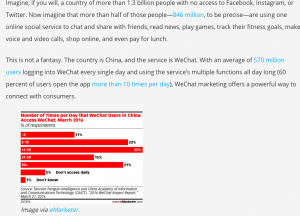Saudi Arabia is an episode of the Patriot Act, a show hosted by Hasan Minhaj. In the second segment of this episode, Minhaj puts emphasis on the social framing of the Indian Americans. Firstly, he describes how society expects Indian people to behave well and have outstanding achievements, for example, to be engaged in the professional occupation. It seems that American society has the impression of Indian immigrants to be “good”. But then, he gives some instances of “bad” Indian Americans, such as John Kapoor and Dinesh D’Souza, to show facts that are against the social framing effect. Kapoor, for example, as an Indian American pharmaceutical entrepreneur, has bribed doctors and committed wire fraud. Minhaj satirizes that maybe these people have set Indian Americans free for high expectations, but actually they have destroyed the good figure of Indian immigrants. Lastly, a video describes how Indian parents expect their children to have stable and eminent jobs and how the bad Indian Americans have an influence on children to lead them to a “bad” road to do whatever they want is shown. We can get the conclusion that how the prior framing of Indian Americans has been changed through some famous weighted minorities.
By putting this segment after the Muslim case, Minhaj proves and also strengthens the idea that it is unavoidable that society can have simplex framing to a group of people, Muslim and Indian Americans for example, but it can be reconstructed by weighted minorities. Just as he claims that Saudi Arabia is only 2 percent of the whole Muslim population, but when Saudi Arabia does something wrong, Muslim all over the world have to take the consequences. It is easy for Saudi Crown Prince Muhammad bin Salman to do something simple, such as lifting the ban on women driving, to leave a good impression to America for the reason of the Islamic tropes that have been framed in the American minds, in this case—Muslim as sexist. However, the impression only changes towards him, the individual only, but not the whole Muslim society. It is also easy for the society to change their perception to Indian immigrants after knowing those bad famous Indian Americans. Considering that Minhaj actually has the identities of both Indian and Muslim, it might seem strange to him that how easy it is for a person to leave a good impression with a specific background, Muslim for example, but also how easy it is for a few people to ruin the impression of a whole group of people. But it sounds a little relaxing to him and the children in the video to live without the high social expectations.

